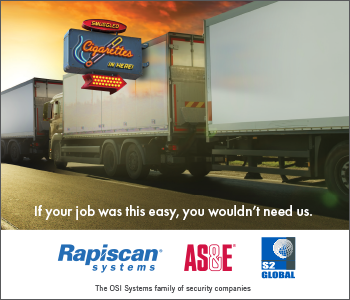Illegal wildlife trade: overview of airport assessments
22 February 2019
By Roux Raath and Felix Duarte e Silva, Environment Programme, WCOStudies have shown that the air mode has become a sought-after transport avenue for criminals wishing to move illicit wildlife products from one country to another. Not only is air transport fast and convenient, it also allows large consignments to be broken up into smaller ones, thereby reducing the risk of detection.
Several initiatives have been undertaken to address this threat. One of them is the “Reducing Opportunities for Unlawful Transport of Endangered Species” (ROUTES) Partnership, which was founded in 2015 by the United States Agency for International Development (USAID) and is led by TRAFFIC, a non-governmental organization (NGO) with a focus on wildlife trade, conservation and sustainable development.
The ROUTES Partnership aims to assist the transport sector in its efforts to reduce illegal wildlife trafficking via land, sea and air. Under the umbrella of ROUTES, representatives from government agencies, the transportation and logistics industry, international conservation organizations and donors collaborate on various activities to combat the illegal wildlife trade (IWT).
One of these activities is the conduct of technical assessments at international airports, in order to raise the level of awareness among key players of the potential misuse of air freight services by criminals, and assess the adequacy of the procedures in place to mitigate acts of wildlife smuggling.
These assessments are undertaken by experts from the WCO and the International Air Transport Association (IATA), and are aimed at identifying areas for improvement and ways to achieve such improvement with or without specific assistance from ROUTES Partnership experts. Other key objectives include the identification of best practices that may be shared, as well as the mobilization of commitment and resources to halt the trafficking of wildlife.
Questionnaire
In order to carry out the assessments, experts developed a model questionnaire that was tested during two assessments which took place in 2016. The model drew on existing tools dealing with similar issues, which had already been used by the WCO, IATA and the International Consortium on Combating Wildlife Crime (ICCWC).
The airport assessment questionnaire includes an executive summary, detailed background information, the outcomes of the assessment exercise itself and recommendations. Besides the undertaking of an institutional overview, the following areas are evaluated:
- legislation, policy and procedures;
- awareness;
- human resources;
- security measures related to IWT;
- operational capacity;
- coordination and cooperation;
- intelligence and risk management;
- technology;
- screening;
- investigation and consequence phase.
All stakeholders present at an airport are assessed, such as the Civil Aviation Authority, the service in charge of aviation security, ground handlers, airlines, the local police force, a country’s wildlife authority (where applicable), freight services, private contractors, transit shed operators, freight handlers, and the Customs authority.
Airports covered
The airports selected for assessment thus far have been drawn from the routes regularly used by traffickers, based on available intelligence. Participation is, however, voluntary. To date, assessments have been conducted at the following airports:
- Maputo International Airport in Mozambique (2016);
- Hanoi International Airport in Vietnam (2016);
- Entebbe International Airport in Uganda (2017);
- Jomo Kenyatta International Airport in Kenya (2018);
- Kuala Lumpur International Airport in Malaysia (2018);
- Hamad International Airport in Qatar (2018);
- Oliver R. Tambo International Airport in South Africa (2018).
Key findings
Assessment findings are shared with the relevant players at the national level, and are not made public. However the following observations, which are cross-cutting by nature and are relevant to most airports, can be shared:
- There is a need to raise the awareness of all stakeholders regarding the IWT, especially when it comes to the involvement of organized crime and the impact on the economy, the survival of species, ecosystems and governance.
- Specialized training is required by most stakeholders to detect wildlife and animal parts, as well as illegal products made from endangered species. National training curriculums for law enforcement staff should be strengthened in that regard. As for private sector stakeholders, basic recognition training as well as handling training is needed.
- Signage and communication tools addressing the issue must be developed for both staff and travellers.
- Technologies, such as X-ray scanners and sniffer dogs, should also be deployed and used with the fight against IWT in mind when inspecting baggage and people.
- The fight against the IWT must be escalated to higher management as a priority enforcement area, and must be discussed at inter-agency meetings.
- Legislation must enable the exchange of information between all law enforcement agencies, as well as with other relevant partners.
Going forward
Two further assessments are planned for 2019. In addition, WCO and IATA experts are currently looking at innovative ways to solve two specific questions: how to ensure that countries take the proper measures to implement the technical assessment recommendations; and how to provide the necessary support, especially to Customs administrations.
More information
enforcement@wcoomd.org

